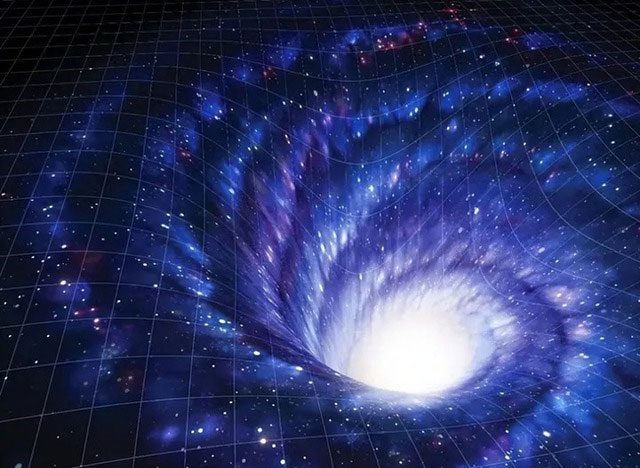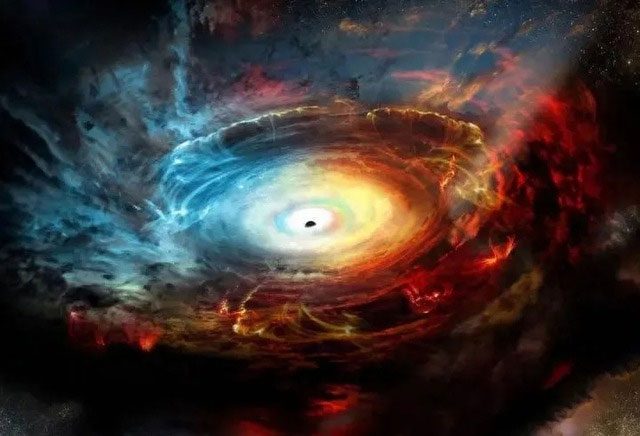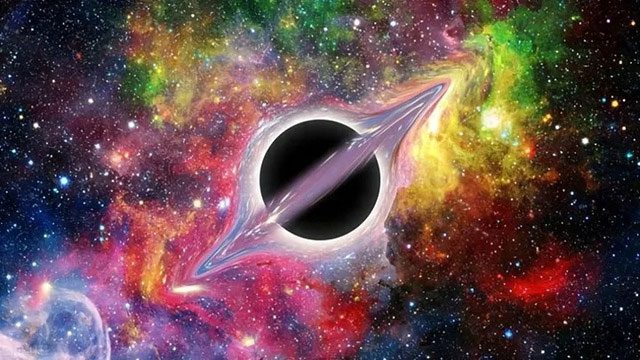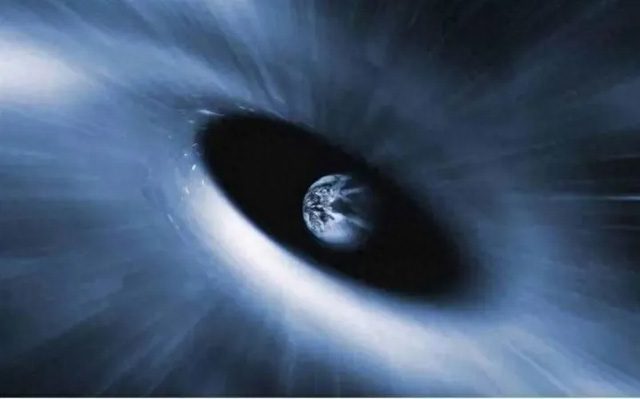Black holes are among the most mysterious and fascinating entities in the universe. Countless scientists have worked tirelessly to uncover the mysteries of black holes.
But what do we see when we are pulled into the gravitational vortex of a black hole? This question has remained a cosmological mystery until recently. At this moment, we finally have the opportunity to peek into the enigma of black holes and explore the secret world hidden deep within the universe.

Einstein’s general theory of relativity reveals that the nature of gravitational force is the curvature of spacetime, and black holes are indeed an extreme phenomenon of spacetime curvature. (Image: Zhihu)
The formation of black holes is primarily related to the death of stars. At a certain stage in a star’s evolutionary process, when nuclear fusion ceases and the star runs out of fuel, its core can no longer withstand its own gravitational force and collapses. This process is known as “core collapse” of the star.
After the core collapses, the size of the star reduces dramatically and its mass concentrates into a very small space. When the core’s mass reaches a certain critical point, the gravitational force becomes irresistible, and the star completely collapses into an extremely compact celestial object, forming a new black hole.

The strong gravitational force created by black holes bends spacetime around them to an extreme degree, forming a boundary known as the “event horizon,” beyond which any matter and information that crosses this boundary cannot escape. (Image: Zhihu).
Types of Black Holes
Based on their formation methods and characteristics, we can divide black holes into three types: stellar black holes, intermediate black holes, and supermassive black holes.
- Stellar black holes are those with a mass approximately 10 times that of the Sun, formed from the collapse of stars. This type of black hole is the most common, and many such black holes have been discovered to date.
- Intermediate black holes lie between stellar black holes and supermassive black holes, with masses ranging from a few thousand to a million times that of the Sun. However, there remains some debate among scientists about how such black holes are formed.
- Supermassive black holes are the heaviest black holes in the universe, with masses ranging from millions to billions of times that of the Sun. Scientists believe they may form through some special mechanisms, such as the merger of galaxies or the collapse of materials in the centers of galaxies.

The larger the black hole, the stronger its gravitational pull. Inside the event horizon of a black hole, the gravitational force is so strong that not even light can escape. This makes black holes the strongest gravitational traps in the universe, attracting and engulfing nearby matter and galaxies. (Image: Zhihu)
Extreme Environments and Astonishing Scenarios When Falling into a Black Hole
When an object falls into a black hole, it experiences a series of extreme environments and astonishing scenarios. First, the gravitational field increases rapidly, creating a very large gravitational gradient. This gravitational gradient is so steep that even the strongest matter will be torn into atomic-sized pieces. Neither rocks, metals, nor the human body can remain intact under the gravitational force of a black hole.
As an object approaches the boundary of the black hole, known as the “event horizon,” things become even stranger. Due to the curvature of gravity, light is bent, creating unusual visual effects. As an object nears the black hole, the light is distorted into strange shapes resembling beams of light illusions. This type of beam is called “gravitational lensing” and is a true manifestation of the strong gravitational field of the black hole.
Inside the event horizon, time also becomes astonishingly warped. The effects of relativity cause time to pass more slowly compared to the outside world, meaning that time near the black hole seems extremely long to the external universe. For objects falling into the black hole, time may only pass in an instant, but for the outside world, years or even centuries may have elapsed.

The accretion disk of a black hole is a ring-shaped mass being drawn into the black hole by nearby matter, generating high temperatures and radiation due to friction. These studies provide important clues for us to explore the movement of matter around black holes and estimate their masses. (Image: Zhihu).
Objects that delve deeper into the black hole will face even harsher conditions. The center of the black hole, also known as the “singularity,” is a place that cannot be explained by our physical understanding. It is a place of infinite density and gravity but with an extremely small volume. Here, classical physical laws no longer hold, and the combination of quantum mechanics and general relativity becomes the only theory that explains the nature of black holes.
With these extreme environments and astonishing scenarios, matter falling into a black hole will cease to exist in our familiar universe. They may completely vanish or become part of the black hole. We do not have definite answers about the ultimate fate of matter in black holes, which adds to the mystery of black holes.
Although black holes are among the most mysterious places in the universe, our understanding of them remains limited. Scientists are striving to study the nature and behavior of black holes in hopes of revealing the secrets they conceal. By observing the radiation around black holes and using advanced simulation techniques, we can gain deeper insights into the extreme environments and astonishing scenarios that matter falling into black holes must face.

Through observing black hole merger events, scientists have discovered that black hole mergers frequently occur in the universe. These black hole merger events are the products of massive gravitational wave explosions in the universe, and the gravitational waves they generate can be recorded by gravitational wave detectors on Earth. By observing and analyzing these gravitational wave events, scientists can study the formation and evolution of black holes as well as the structure of the universe. (Image: Zhihu).





















































